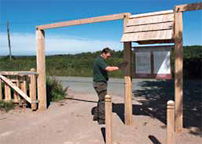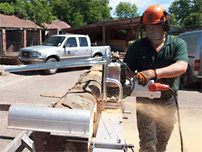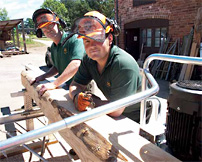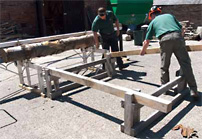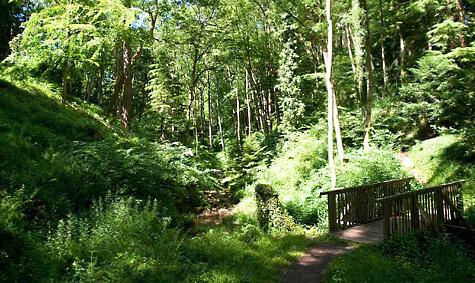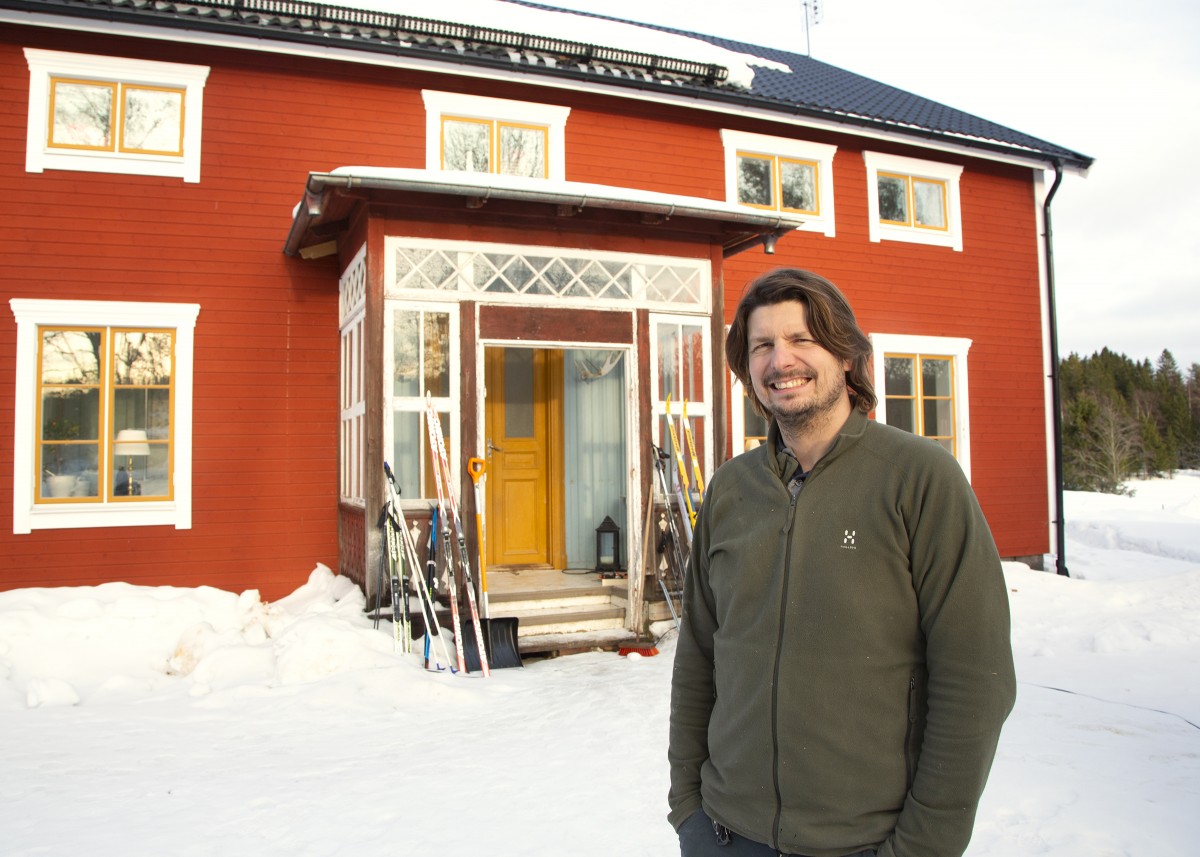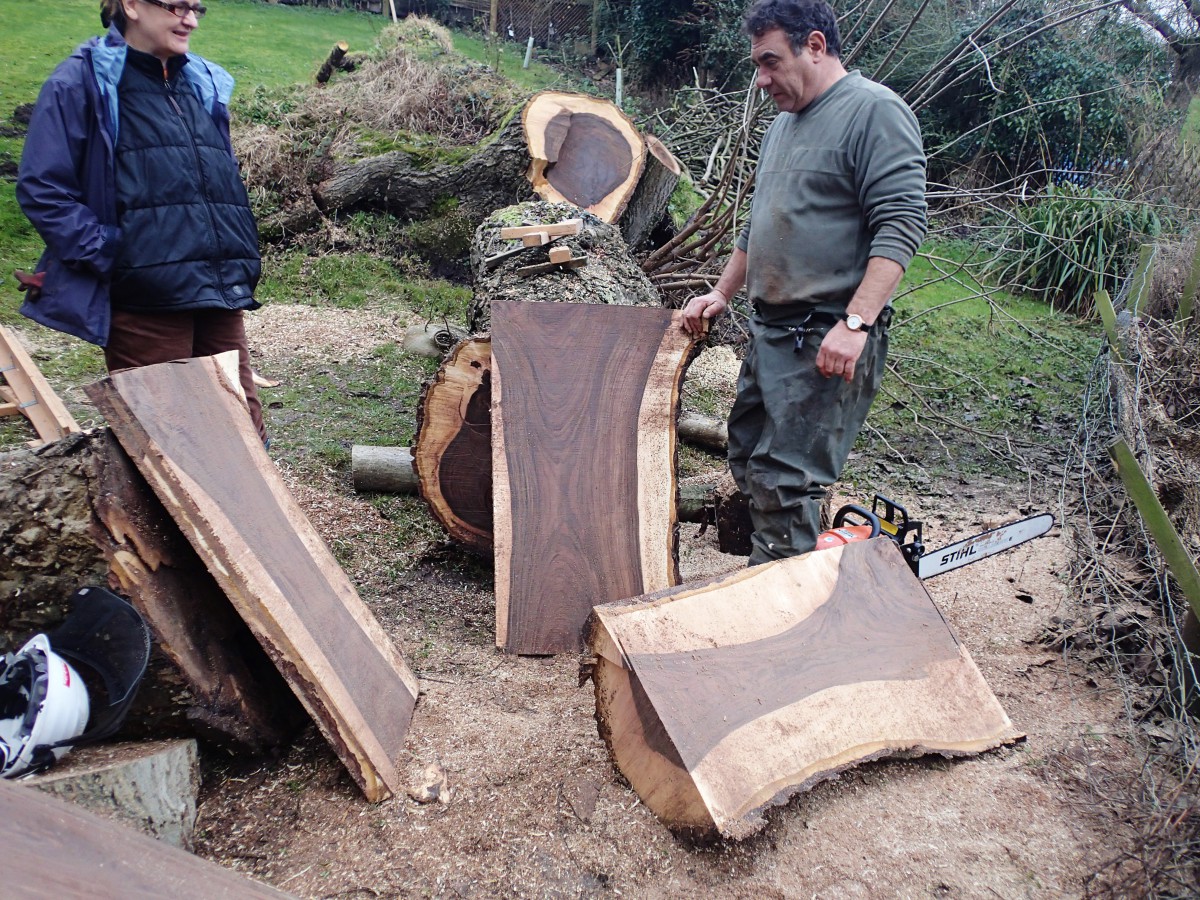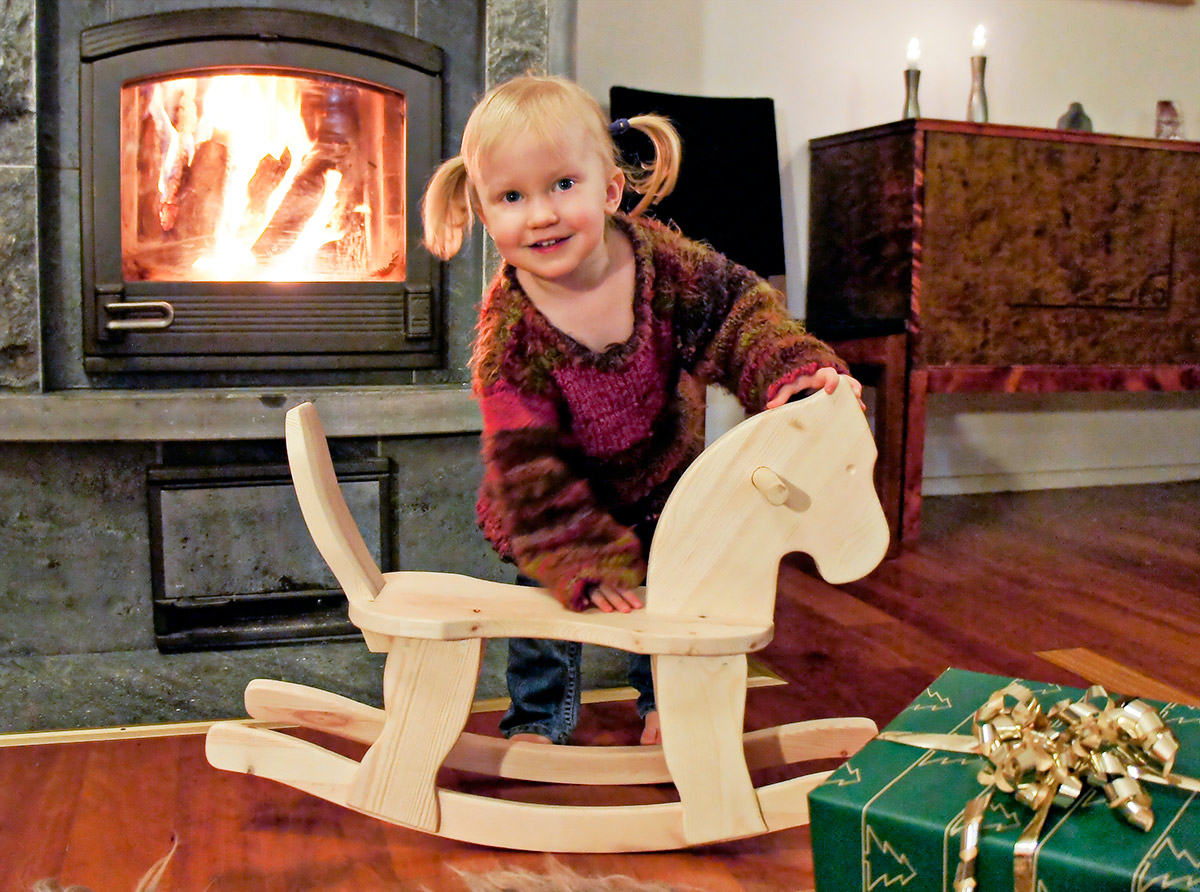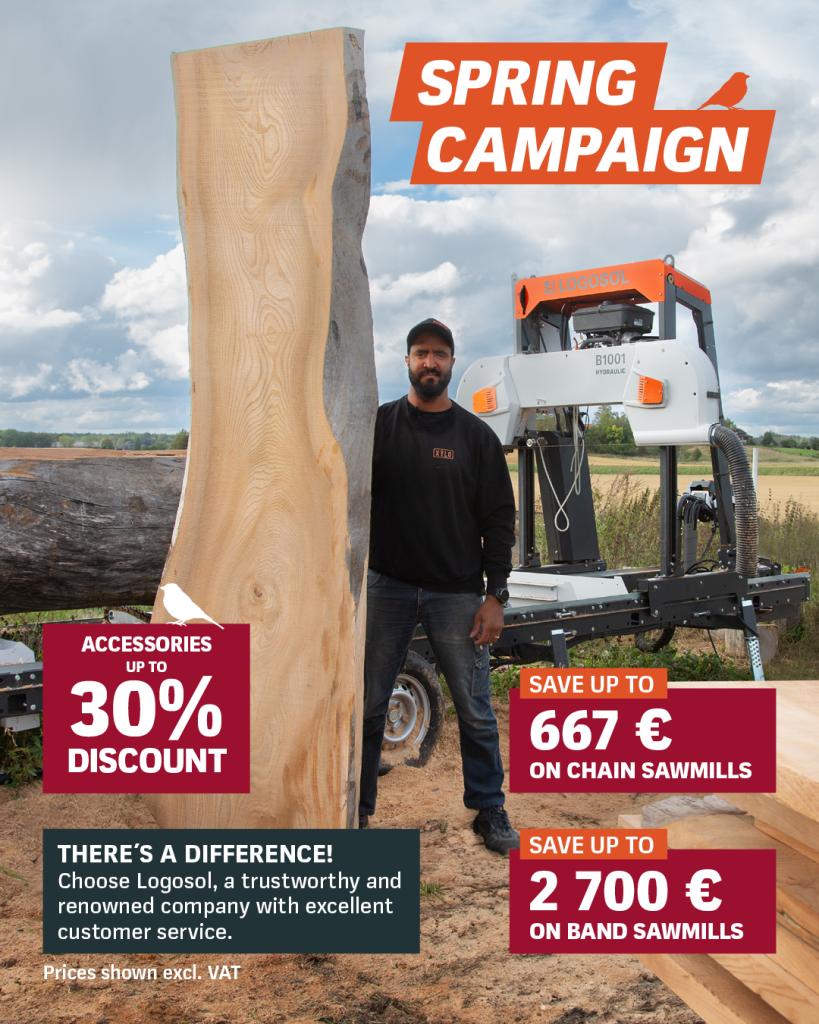After the Crown, the National Trust is the biggest forest owner in the UK. The aim of the Trust is to preserve places of historical interest and natural beauty. One of the tools it uses to do this is a portable swmill.
The Trust was formed in 1895 following an Act of Parliament. Today, it is an independent organisation that manages properties throughout England, Wales and Northern Ireland.
One of the properties is Dudmaston Estate near Bridgnorth in Shropshire with 250 hectares of well-maintained forest.
Sawmill since 1910
Dudmaston was donated to the Trust in 1978 by Lady Labouchere. One of the parts of the estate that is particularly popular with its 45,000 visitors a year is a woodland area called ”The Dingle”. It looks as though it was shaped by a landscape architect to be like a mythical forest. Every tree has been positioned with the greatest of care and a stream flows along the valley floor.
The first sawmill came to Dudmaston in 1910, and the tradition continues to live on in the same place. For the past five years, work has been carried out using a Logosol M5, which until recently had a Stihl MS660 as its drive source.
E5000 more efficient
”We’ve upgraded the sawmill by introducing an E5000 electric saw. This increases capacity and reduces our environmental impact,” says Annis.
A higher capacity will be needed. Until now, the Logosol saw has been used to produce timber for fencing and posts, gates and bridges, but now there is also a need for dried timber for interior joinery and the like. Because of this, the National Trust has also invested in a Sauno wood kiln and kiln box. When we visited, the kiln had been installed but hadn’t yet been put into operation.
Plans for own products
Plans are also in place to produce smaller products such as garden furniture, bird tables and cutting boards for sale to the general public.
”We have access to sales channels through the National Trust’s own shops,” says Annis.
